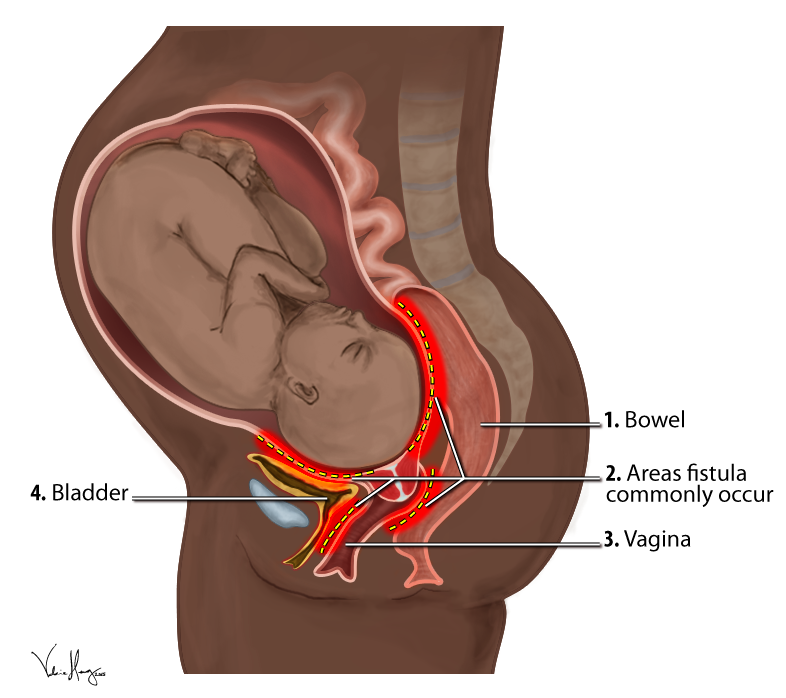Vaginal Fistula

Overview
A vaginal fistula is an unusual opening that develops between the vagina and another organ, such as the bladder, colon or rectum. Your health care provider might describe a vaginal fistula as a hole in the vagina that allows urine, gas or stool to pass through the vagina.
Vaginal fistulas can develop after childbirth, an injury, a surgery, an infection or radiation treatment. You may need surgery to fix a fistula.
There are several types of vaginal fistulas. They are named based on the location and organs they affect:
- Vesicovaginal fistula. Also called a bladder fistula, this opening occurs between the vagina and urinary bladder. This is one of the most common fistulas.
- Ureterovaginal fistula. This type of fistula happens when an unusual opening develops between the vagina and the tubes that carry urine from the kidneys to the bladder (ureters).
- Urethrovaginal fistula. The opening occurs between the vagina and the tube that carries urine out of the body (urethra). This type of fistula is also called a urethral fistula.
- Rectovaginal fistula. In this type of fistula, the opening is between the vagina and the lower portion of the large intestine (rectum).
- Colovaginal fistula. With a colovaginal fistula, the opening occurs between the vagina and colon.
- Enterovaginal fistula. In this type of fistula, the opening is between the small intestine and the vagina.